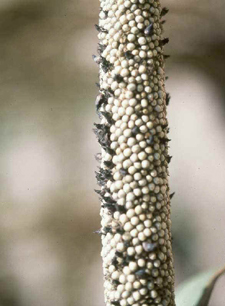| Claviceps fusiformis | |
|---|---|
 | |
| Scientific classification | |
| Domain: | Eukaryota |
| Kingdom: | Fungi |
| Division: | Ascomycota |
| Class: | Sordariomycetes |
| Order: | Hypocreales |
| Family: | Clavicipitaceae |
| Genus: | Claviceps |
| Species: | C. fusiformis |
| Binomial name | |
| Claviceps fusiformis Loveless, (1967) | |
Claviceps fusiformis is a plant pathogen. [1]